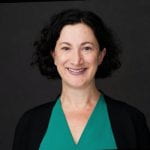WWAMI Rural Residency Training Opportunities
Introduction
 An essential need in the WWAMI region is meeting the workforce needs of the most underserved populations, including the extensive areas of rural and frontier communities. The most effective tool for recruiting physicians to work in rural locations is to train them during residency training in those locations, providing the context for working and living in environments where there are fewer resources and a much higher need for adaptability and flexibility in meeting the community’s needs.
An essential need in the WWAMI region is meeting the workforce needs of the most underserved populations, including the extensive areas of rural and frontier communities. The most effective tool for recruiting physicians to work in rural locations is to train them during residency training in those locations, providing the context for working and living in environments where there are fewer resources and a much higher need for adaptability and flexibility in meeting the community’s needs.
The University of Washington GME Office strongly encourages all of its programs to consider the possibilities of training your residents in rural locations. This one-pager is intended to introduce programs to those possibilities.
Options for Rural Residency Training
Types of rural training experiences:
- Rural rotations: Time-limited patient care experiences in rural clinics and/or hospitals. Typically these are 1-2 months in duration.
- Curricular track with rural rotations: A specific curricular track selected by the resident, with designated goals and objectives, educational materials and didactics, and a longer patient care experience in the rural community but with a duration less than 50% of the overall training of the resident.
- Full rural track: A specific curricular track as noted above, but the time spent in the rural community is greater than 50% of the overall training of the resident. Note that there may or may not need to be separate accreditation of this type of track, depending on funding and ACGME requirements.
Additional information about the various rural training program options created by Randall Longenecker, MD and David Schmitz, MD of the RTT Collaborative.
Accreditation / ACGME Requirements
New as of June 2021 – ACGME Rural Track Program Designation: Under the accreditation framework for Medically Underserved Areas and Populations, the ACGME has developed an ACGME Rural Track Program designation across specialties that will facilitate the expansion of opportunities to address the health care needs of medically underserved areas. This designation aligns with current rules and regulations of the Centers for Medicare and Medicaid Services (CMS) that address separately-accredited “rural tracks.” The request process is now available in ADS.
More information available on the ACGME’s Medically Underserved Areas and Populations webpage.
The ACGME Board of Directors in 2020 adopted an Accreditation Framework for Medically Underserved Areas/Populations, specifically acknowledging its role and responsibility in supporting the development of physician workforce to serve those populations.
- Details can be found in this ACGME presentation from July 2020
- ACGME Director, Medically Underserved Areas/Populations and GME: Laney McDougal, MS
We recommend consulting your specific ACGME Review Committee prior to establishing a full track or rotation, as requirements vary by specialty.
For UW GME purposes, if you are creating a new GME rotation, consult the New Rotation Site Policy
Identifying Location(s) and Rural Partner(s)
Helpful suggestions for identifying rural sites:
- Academic Affairs (UME) regional deans may be able to help identify practices / sites that are nexus of rural designation and have expanded practice opportunities
- UWSOM / program alumni at various sites may be a good starting point
- Look to locations where we have existing rotations / already have established GME
- List of Academic Affairs’ regional training sites – forthcoming
- Consider where UW Medicine has existing / developing business relationships – e.g., referral centers
Finances
Developing a pro forma for supporting these options is obviously critical, and needs to estimate both the incremental expenses that would be occurred, as well as the revenue possibilities to support the option.
In general, the larger financial analysis must primarily focus on the “Return on Investment” proposition for both the UW and for rural hospitals/partners: what are the expected outcomes/reason to develop these rotations or track relative to the cost (revenues minus expenses)? For many of these options, expenses may well be higher than revenues, but the need for rural workforce and the values of having GME in the community may be considered worth that investment by the stakeholders.
Revenues
Options to support / fund rural rotations:
- CMS GME payments: note that full rural tracks may qualify for the new CMS cap. Also, new full rural tracks in rural hospitals may also qualify for new CMS GME payments.
- See AAMC publication Rural Training Track Programs: A Guide to the Medicare Requirements
- HRSA:
- Rural Residency Program Development grants (for start-ups)
- Teaching Health Center funding (needs to have an FQHC or Consortium actually sponsoring the program)
- Primary Care Training Expansion funding (for start-ups)
- Occasional other rural expansion funding
- VA: VACAA funds are still available
- State support (Medicaid; direct state lines)
- Private payor models
- Community support: Foundation grants, payor grants, other sources.
Expenses
Primary expense will be compensation, both for residents as well as for faculty teaching and supervision; administrative support is also essential.
There will be a variety of additional expenses related to education and infrastructure requirements.
GMEPAC Approval
Note that GMEPAC approval is required if there is a proposed expansion in resident complement in developing this track.
Additional Resources
- Rural program development resources:
- Graduate Medical Education Financing: Sustaining Medical Education in Rural Places (Policy Brief, WWAMI Rural Health Research Center, 05/2015): http://depts.washington.edu/uwrhrc/uploads/RTT_Finances_PB.pdf
Contact Us

Cindy Hamra, JD, MA
Associate Dean, Administration and Finance
Phone: 206.685.5647
Email: hamrac@uw.edu
Contact Us

Cindy Hamra, JD, MA
Associate Dean, Administration and Finance
Phone: 206.685.5647
Email: hamrac@uw.edu
